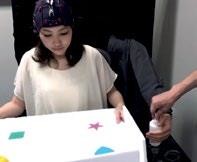Or why have two limbs when you can have three, or more.


Or why have two limbs when you can have three, or more.
A popular trope in science fictions is the use of technology to greatly enhance human physical strength, speed and endurance. This an come from replacing damaged limbs with bionic parts, wearing powered armor, or straight up piloting giant robots.
Today, many of these technologies have already become reality. In 2017, a Florida man became the first person to be fitted with a mind-controlled bionic arm developed by the John Hopkins Applied Physics Lab—called a Modular Prosthetic Limb—that cost US$120 million and 10 years of R&D. Powered exoskeleton suits have been deployed in industries such as manufacturing to help workers with heavy loads and in healthcare for rehabilitation purposes. And yes, even giant mecha has been realized. In 2016, a South Korean robotics firm demo-ed the Method 1, a human-piloted giant robot. Wearable robotics is predicted to be a multi-billion dollar industry within the next decade.

However, I’m not interested in any of that, because they’re all boring. Why are we limiting ourselves to the human physique? Why stop at two arms, when we can have more? Doctor Octopus (of Spider-man fame) seems to be the only science fiction character to see the brilliance in using robotics to augment not just strength and endurance, but human versatility.
Well, apparently someone else have thought of it too. Researchers from the Advanced Telecommunications Research Institute International (ATR), Japan published a paper in the July 2018 issue of Science Robotics journal titled “BMI Control of a Third Arm for Multitasking”. BMI stands for Brain-machine Interface, and their research essentially looks into the possibility of training people to control a robotic arm independently of their existing limbs, effectively multitasking with three arms.

In a video demonstrating this experiment, test subjects were instructed to think about grasping and releasing a water bottle with the robotic arm while simultaneously balancing a ball on a tray with their own hands. A cap with electrodes would read the electrical signals generated, which is then translated to a command for the robot hand to move. 8 out of 15 testers were able to successfully perform this task.
Perhaps the ATR researchers should have a talk with John Hopkins bionic arm guys to speed things up.























